It’s been around for quite some time, since 1997 the Forester, yet a local survey indicated the general public seems to think that this Subaru is another jacked up wagon, like Outback. Which seems kind of weird to us.

While it is certainly not the best seller for Subaru here, beaten by Outback and XV, Forester is the brand’s most popular model globally. So in New Zealand, the company is out to rectify the misconception, reinforcing that this is actually a medium-sized SUV, and a ‘fun and practical’ one at that.
It is also amongst the biggest in class, and has grown 19mm longer at 4627mm, 21mm wider at 1817mm and rides on a wheelbase 28mm longer at 2667mm. There’s said to be 35mm of extra legroom in the rear, and a bit more headroom – both are generous. Luggage space improves slightly to 498L with all seats in use, expanding to 1060L with rear seats folded flat. We did just that and after putting down protective wadding bundled a half metre of wood in the back, which upset the suspension not one jot. It didn’t even looked weighed down, and certainly didn’t feel it to drive.
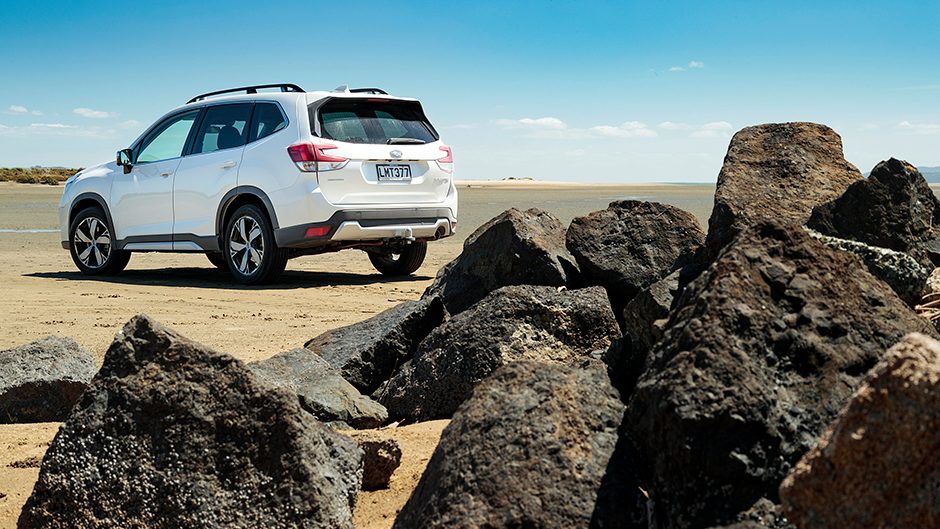
The underpinnings are new too, Subaru’s latest ‘global’ platform said to imbue it with superior dynamics. As per normal for the firm, you can expect a proper degree of off-road credibility should you decide to hit the beach or head into the bush, with ground clearance of 220mm, permanent AWD and enhanced X-mode for off-roading (optimised settings for snow, mud and gravel). We took to the beach for the photo shoot, and discovered a remote off-road area, scarcely stressing its off-road ability for either.
Externally it’s a more interesting looker too, with new C-shaped LED headlamps, matching style taillamps, beefier bumpers, flared guards, a solid shoulder line, updated hexagonal grille, and silver garnishes for the 2.5 Premium which also gets roof rails with integrated loops for securing stuff more easily. Our particular drive vehicle featured a tow ball which, for once, we put to good use. It’s rated at 750kg unbraked, so hauling a 250kg boulder across our section didn’t exactly stress it much either.
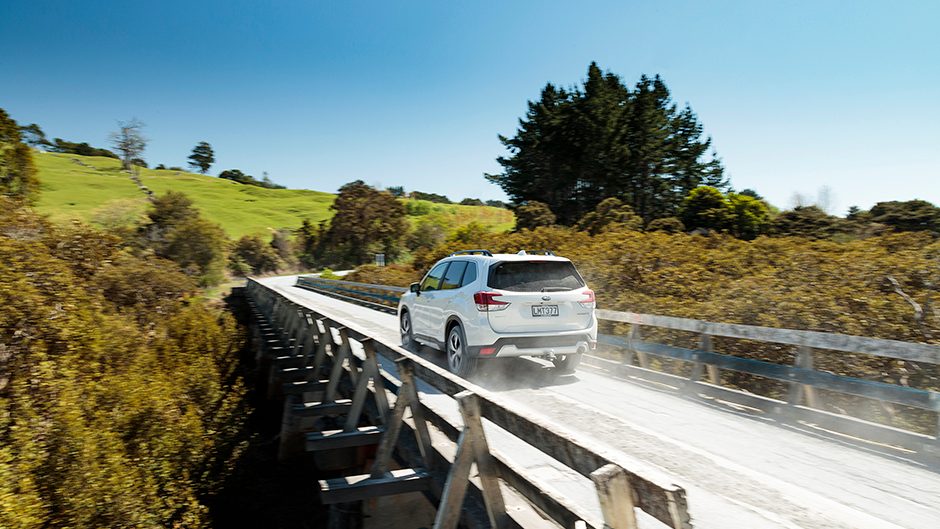
Best atmo 2.5 yet?
On the motivation front, Subarus are always interesting, being flat fours. And the latest iteration of the 2.5-litre naturally aspirated boxer engine powering the three-strong Forester range has undergone a thorough makeover, being 90 per cent new on the parts count and adding direct fuel injection for better torque production and fuel efficiency.
It’s peak output of 136kW arrives at 5800rpm, while maximum torque of 239Nm chimes it at 4400rpm. That latter figure is a bit misleading, however, for there seems to be plenty of grunt down low, below 2000rpm even, for easy city work, while at rural speeds things really perk up at around 3000rpm. It’s comfortably the feistiest this engine has been, though on paper the output increases are relatively modest.
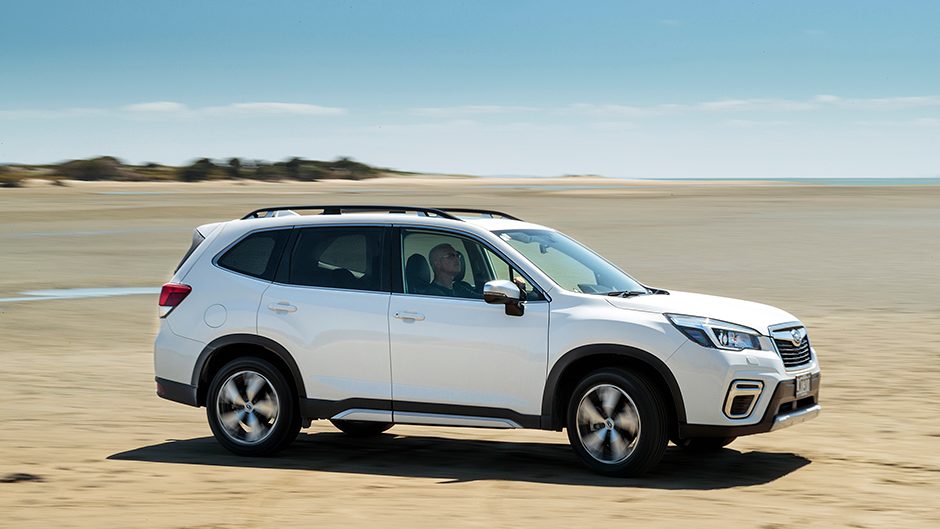
Helping things along is Subaru’s further enhanced Lineartronic CVT. Like most of its type, it’s all about fuel efficiency, rated overall at 7.4L/100km (168g/km). Given a bit of a workout we saw fuel use into the early teens, but at a relaxed highway cruise we also noted a low into the sixes and averages in the high eights to early nines, without really trying to drive for optimum economy. Helping is that it drinks 91ULP contentedly.
Still that quiet, long-legged ride
If you’re after a medium SUV that aims for a balanced mix of quiet easy-going progress and cornering precision, you get that in the new Forester. There’s a touch of body roll on the go when you’re pushing the limits, but it’s difficult to dial that down too much without ruining ride quality. As it is then, this is beautifully absorbent over the worst that Kiwi secondary roads can lob at it, bottoming out on occasion, and doing so gracefully.
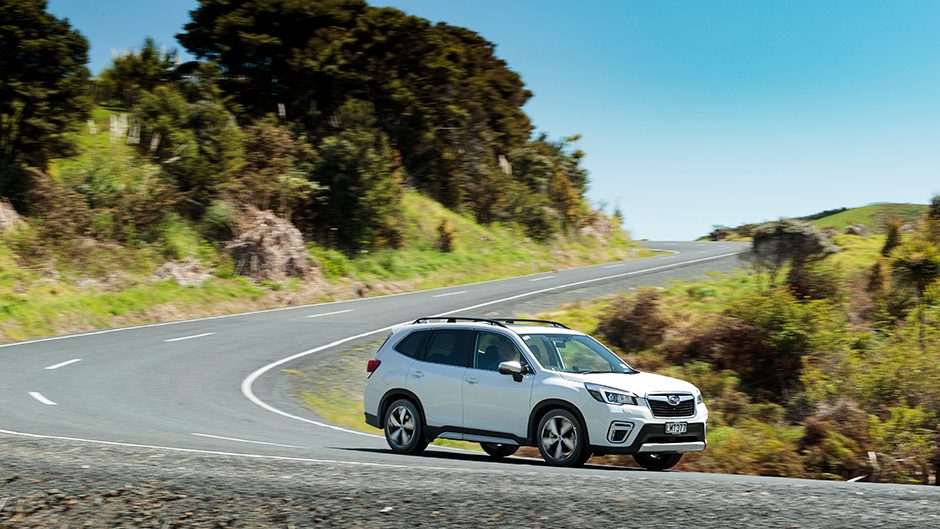
It also corners in determined fashion, torque vectoring by brake helping maintain the chosen line. You have to be in animal mode to uncover the understeer lurking beneath. But that’s not actually the best aspect of this vehicle. It’s how it goes so well without really trying that impresses greatly. Sure, best performance resides above 4000rpm, but it fires well from 3000-4000rpm and feels effortless even at relatively low revs. It may have taken the best part of 15 years to get this engine optimised but it really is killer good now, particularly in this application.
SI modes work well
Forester has two Subaru Intelligent Drive modes, i for general use, and S for more sporting applications. Despite there being paddles on hand, in S mode they’re really surplus to needs, for the engine powers along nicely on the throttle, performing mock upshifts on the move. This is the best mode if you’re wanting a bit of a tickle along for overtaking.
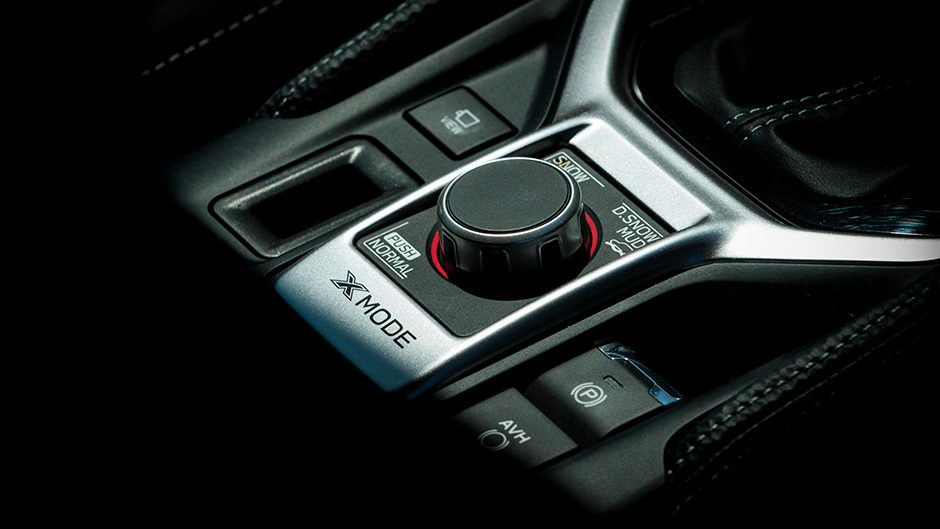
Performance is not quite in the same powerhouse league as competitors with turbocharged engines. But nor is there the thirst when pushed, or the lag off the mark. How we’d describe it is entirely adequate for its application. An overtake requires around 180m or just over 6sec, while it takes 9sec to reach 100 from a dead stop. A Mazda CX-5 2.5 is similar overall, while Honda’s CR-V is a touch quicker, but essentially they’re much of a muchness.
What’s really a bit standout about the Forester is its real world low-end pull, with strong urge from below 2000rpm, and that’s not even in the racier Sport mode. It’s just so sorted, without hesitation away from the lights, even when idle stop is active. Being a practical sort of a vehicle, and also high riding, entry and exit are about as good as it gets, aided further by a comfort entry and push button start system. The doors shut with a reassuring clunk too, the lower aspects overriding the sills, preventing dust and muck from messing your clothes. Once ensconced the driving position is good, with a great all-round view.
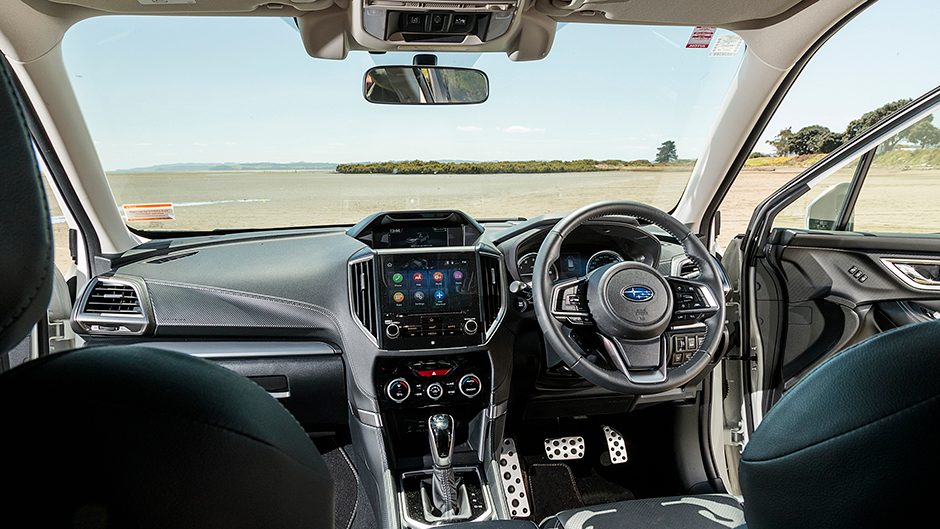
Too much monitoring?
Subaru’s new Driver Monitoring System (DMS) seems like a mixed blessing to me. It uses facial recognition technology to set driver preferences for seat position, door mirrors, air conditioning and some instrument displays. It must have taken one look at me and said no way for I couldn’t seem to activate the system. So each time I entered the vehicle, the seat was in the wrong position.
Despite not wanting to acknowledge my existence, that didn’t stop it from admonishing me on a regular basis, with warnings to keep eyes up and stay alert, take a rest after a half hour at the wheel, bleeping at every little perceived misdemeanour and generally being annoying. Try as I might I couldn’t seem to cancel the audible warnings either. The flashing visuals are totally sufficient (like with Speed Limit Recognition). So we’d say this is a work in progress.
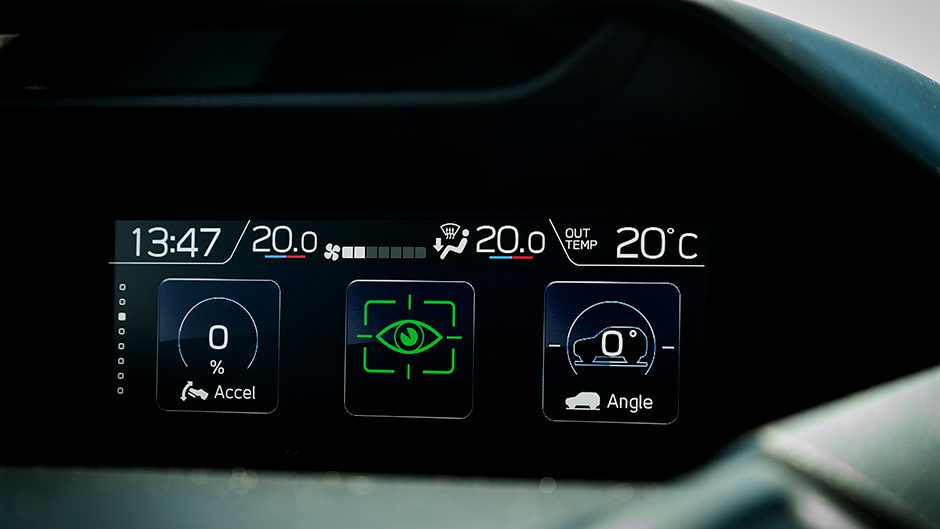
EyeSight driver assist technology is now standard across the Forester range. The only time it doesn’t seem happy is facing directly into the sun but that happened only once for about a minute in my entire time with the vehicle. It underpins active cruise, amongst a host of other driver assistance technologies. Subaru interiors are often a mixed bag and so it is with the new Forester.
For the most part controls work well, buttons well sited, but the small secondary screen above and a fair way forward of the touch screen seems a waste of space. Much of the info is duplicated anyway; in front of the driver is a system resembling a head-up display that merely shines different coloured lights onto the screen, informing the driver if there’s a vehicle ahead (which can be seen anyway).
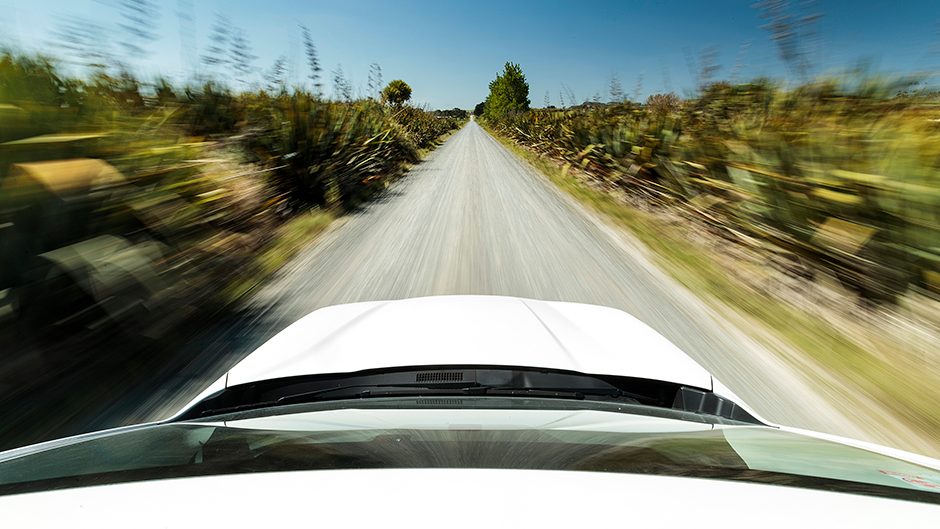
So we’d say this is a work in progress. EyeSight driver assist technology is now standard across the Forester range. The only time it doesn’t seem happy is facing directly into the sun but that happened only once for about a minute in my entire time with the vehicle. It underpins active cruise, amongst a host of other driver assistance technologies.
Subaru interiors are often a mixed bag and so it is with the new Forester. For the most part controls work well, buttons well sited, but the small secondary screen above and a fair way forward of the touch screen seems a waste of space. Much of the info is duplicated anyway; in front of the driver is a system resembling a head-up display that merely shines different coloured lights onto the screen, informing the driver if there’s a vehicle ahead (which can be seen anyway).
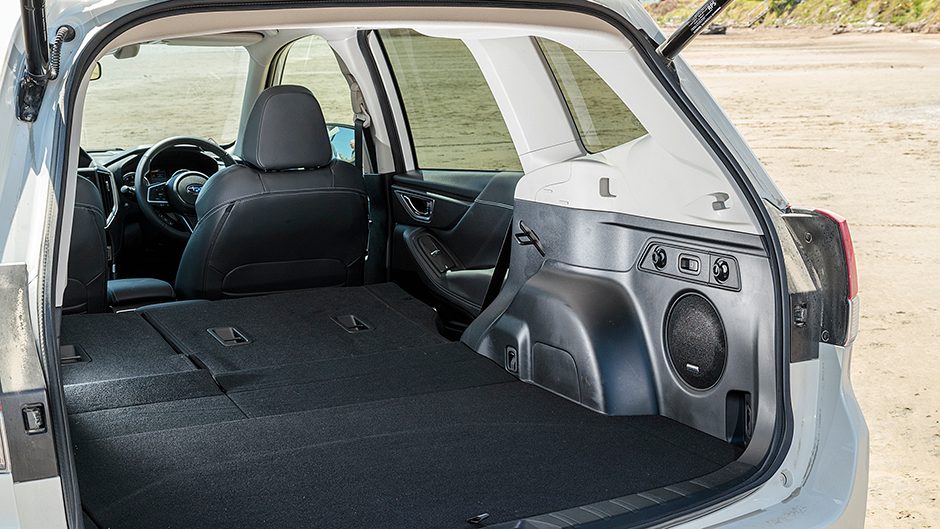
The range is simpler now, with an entry Sport model at $40k, and this one with all the bits (like leather, sat nav, sunroof and powered tailgate but no seat heaters) at $47,490. There’s a $45k Sport Plus inbetweener. Great all-round vehicles like Forester show precisely why the medium SUV sector is the current Kiwi favourite.
| Model | Subaru Forester Premium |
| Price | $47,490 |
| Engine | 2498cc, flat 4, DI, 136kW/239Nm |
| Drivetrain | CVT, all-wheel drive |
| Fuel Use | 7.4L/100km |
| C02 Output | 168g/km |
| 0-100km/h | 9.10sec |
| Weight | 1643kg |


